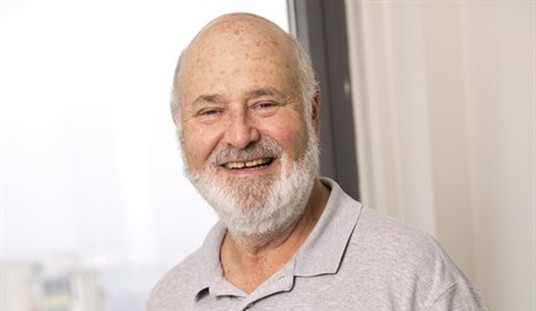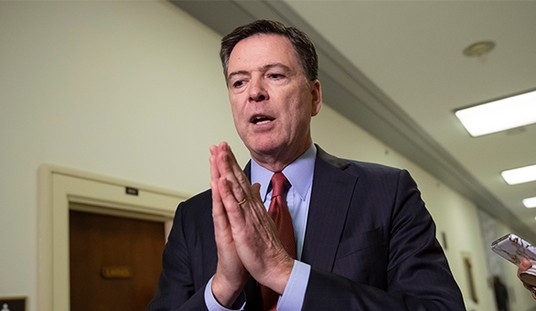Every day in 22 cities around the country, commuter planes take off with so few passengers that the pilots and crew outnumber the passengers. Each passenger pays a fare that’s less than $100. However, the federal government subsidizes the rest of the cost and pays airlines as much as $3,700 for each person on board.
The controversial subsidy program is called Essential Air Services. It was enacted by Congress in 1978 as a “temporary” measure to help rural communities that were facing the loss of air travel when small airports were to be closed due to airline deregulation.
Instead, Congress has temporarily extended the program 21 times over the last 33 years. The 22nd extension, lasting to January, was passed last week by the Senate.
Most importantly, the EAS program has mushroomed into a airline routing program based on political favors. And the subsidy doesn’t go to the traveling public; it goes to the air carriers. The $3,700 per passenger subsidy, for example, has been championed by Senate Majority Leader Harry Reid (D-NV), who fought and won the earmark for keeping open air service for Ely, Nevada (population: 4,000).
How inefficient is the EAS program? While the Feds pay out $3,700 per passenger to airlines to fly from Ely to Las Vegas, Southwest Airlines sells tickets for Las Vegas to Chicago nonstop for as little as $153 one-way — about 10 cents per mile.
Airline columnist Joe Brancatelli, writing in the business journal Portfolio.com, says the EAS program is
fast becoming the metaphoric poster boy for wasteful government spending, entrenched interests, political gridlock.
House Republicans have vowed to kill the program, but its supporters, largely Democrats and the Obama administration, are keeping the program alive. The administration pushed and won another short-term extension through January 2012.
In the latest temporary approval, federal subsidies will now be limited to $1,000 per passenger and the program will be offered to those airports that are at least 90 miles from a large or medium airport hub.
Rep. John Mica (R-FL), the chairman of the House Transportation Committee accepted the latest extension but is still leading the fight to curtail large parts of the program. On September 13, he said,
While this legislation signifies a bipartisan, bicameral agreement to move forward, it must not be just a temporary band-aid.
The reforms are considered small given the extraordinary growth of the program. Over the last ten years, EAS subsidies have grown by 300% while most planes still take off and land with few passengers. In 2001, the temporary program cost $50 million to operate. Now it has ballooned to $200 million.
Last July, the fate of EAS was one of the key provisions that held up passage of the Federal Aviation Administration funding bill. While the FAA bill got a lot of attention in the mainstream media over the government’s inability to collect taxes from the airlines and the furloughing of thousands of unionized workers, most general news reporters ignored the subsidy program.
The subsidy program, however, has been at the heart of conservative political objections over the FAA bill.
An Associated Press analysis shows that in 2010, just 227 passengers flew out of Ely, Nevada, while Great Lakes Airlines got $1.8 million in windfall subsidies. Meanwhile the passengers paid only $70 to $90 for a one-way ticket. The cost to taxpayers for each ticket was $4,107. Thus, online travel website Trip Advisor advertises “Cheap Flights to Ely, Nevada.”
In an editorial in the Ely Times in April of this year, the paper concedes,
Some communities receiving the subsidy are located within easy drive distance of airports that are flight hubs. Some communities have developed other forms of transportation and no longer are dependent on air travel.
Overall, airline companies get subsidies to fly into 153 cities, many of which are only about an hour away from a major airport. Federal money is paid to the airlines and in return they agree to fly into small-town airports.
According to the House Committee on Transportation, in fiscal year 2010, 34 EAS communities averaged fewer than 10 passengers per day per airport. Of these 34 communities, 22 had so few passengers that, on average, there were more pilots onboard the flights than passengers.
A review of the U.S. Department of Transportation data shows how low the passenger traffic has been at these subsidized airports. Three River Falls, Minnesota, for example has an annual flight occupancy rate of 12%. Greenville, Massachusetts, is 28%. Devils Lake, North Dakota, is at 30%, and Watertown, South Dakota, has an occupancy rate of 35%. The list goes on.
The truth is that today most of the EAS communities are between one hour and 90 minutes of a major airport. According to House data, in 2010, 42 communities had subsidized each passenger more than $200. Of those 42 communities, 16 had subsidies in excess of $500 per passenger.
The result is that air routes have been politicized throughout the country. Routes are not subsidized as much by need as by political connections. Democratic lawmakers in Maryland have been able to get Hagerstown subsidized as an EAS city. Yet the city is only 70 minutes from the Baltimore-Washington International Airport. Democratic lawmakers in Muskegon, Michigan, won subsidies for flights when the Grand Rapids airport is only 40 miles away.
The problem isn’t only with Democrats. Former Republican Senator Arlen Specter (R-PA) and fellow Republican Rep. Joe Pitts demanded that the U.S. Department of Transportation recalculate the distance from Lancaster, Pennsylvania, to Philadelphia. Lancaster was only 68 miles from the large Philly airport. The Transportation Department used to consider communities if they are at least 70 miles away from a major air hub. Strong-arming DOT, Specter and Pitts got an “alternative” route considered that put Lancaster 80 miles from Philadelphia International Airport. They won EAS designation.
Political pressure is also exerted by the airlines themselves. Portfolio claims that earlier this year Delta Airlines used “greenmail” by demanding more federal EAS payments or they would pull out of 24 small communities.
While many of the carriers claim that they are doing a favor by servicing small communities, in fact they use the small commuter planes as a way to funnel passengers to their main airport hubs, thereby collecting additional revenues when the passengers board their larger aircrafts.
Finally, there is the amount of money that goes directly to the airlines. Delta Express, United Express, US Airways Express, and American Eagle are well known companies that collect federal EAS funds.
But the largest single provider of EAS flights in the United States is Great Lakes Airlines, a largely unknown air company based out of Cheyenne, Wyoming. Great Lakes was founded in 1977, a year before the EAS program was started.
Aviation Week reports that last year it received $60 million from the federal government in EAS subsidies. That amount is 50% of the Cheyenne, Wyoming-based company’s yearly income, which in 2010 was $125.4 million. Great Lakes’ net income is declining and the company is deep in debt to Raytheon, the manufacturer of a large part of its fleet. In fact, Great Lakes operates with thin margins in a market that has seen other small commuter companies folding. As a result the firm is operating on shaky ground and is largely dependent on federal largess for its existence.
With struggling commuter airlines, the question is whether subsidies are affecting the safety of air travel. Great Lakes operates two types of aircraft: the twin turboprop Brazilian Embraer EMB 120 Brasila and the Raytheon Beechcraft Beech 1900. The Embraer carries 30 passengers and the Beechcraft only 19.
While both have good track records, the use of the small aircraft with under-financed companies raises safety concerns about federally subsidized aircraft. Portfolio’s Brancatelli writes,
EAS service generally stinks. It is often provided on small (sometimes as tiny as nine-seat) aircraft operated by marginal carriers with dubious safety records and miserable service standards.
Still EAS does have its defenders. Faye Malarkey Black, a vice president for the Regional Airline Association, said she believes few federal programs are worth it.
“They call it essential for a reason,” she told the Associated Press. She said her industry group supports “common sense adjustments” for eligibility, but added that rural communities already face many struggles to keep people from leaving.”If you take away air service, who wants to live in those communities?” she asked.
But highly subsidized air travel may have seen its day. As the country faces $16.5 trillion in federal debt, will subsidies for inefficient rural air travel survive? Will it be regarded as an antiquated non-essential service?
Recently the U.S. Postal Service announced it was looking to close 3,700 post offices that were inefficient, serving only a few customers. Tough decisions will have to be made — and political perks will have to go away. Perhaps Mica might be able to muster enough votes in January when the EAS is again up for renewal.
But don’t hold your breath.









Join the conversation as a VIP Member